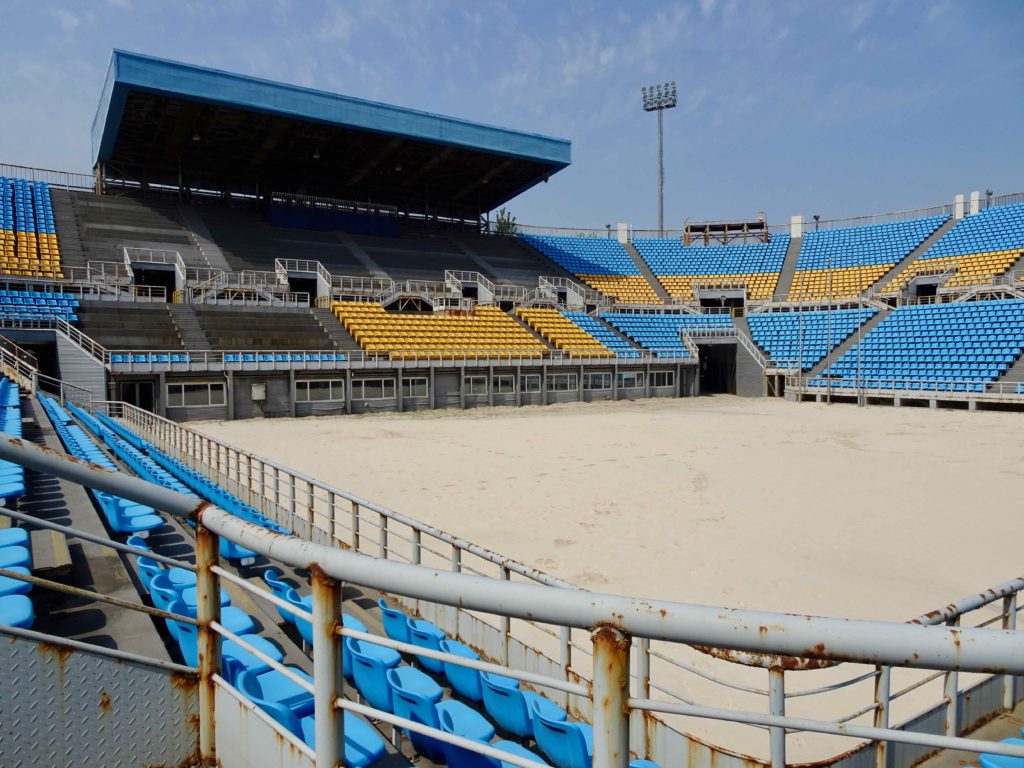After a long break from urbex in China, I am back on my blog with an interesting exploration: an Olympic ruin in Beijing.
The Spectacle of Post-Olympic Architecture in Beijing
While I have been exploring many abandoned buildings in this city, it is only recently that I decided to engage with the issue of the remaining disused facilities of the 2008 summer Olympics. The city was highly involved before the games, in winning the competition. Then, Beijing was even more active during the construction phase of « spectacular architecture » (Broudehoux 2007), not only in terms of sport facilities but also in many other fields touched by the real-estate speculation and the fast demolition/construction the city experienced in the years 2000. Before and during the Olympic games, the Chinese authorities, from the central to the city level, were also extremely focused on the organization of the Olympics, mobilizing the state media as well as the entire population as a propaganda tool toward the collective support of the nation’s political and economic transformation.
However, the post-Olympic era did not give much attention to the issue of the integration of such infrastructure into the urban fabric, leading to serious criticism by urban planners regarding « white elephants » projects in Beijing and Athens (see for instance Kissler 2014). There are already incredible photos of disused Olympic facilities in different locations in Beijing taken by Reuters photographer David Gray (see Byrnes 2012).
The photos presented in this blog report are not aesthetically motivated, they serve as a way to document the state of disrepair of such large-scale projects. These photos also follow my search for the traces of the mega-event more than one decade after it took place.

The Beach Volleyball court, located in Chaoyang Park, was one of the temporary venues designed especially for the Beijing 2008 summer Olympics with a total capacity of 12,000 people.
It is easy to find online archive photos and footage of the stadium as the Olympic Games were a highly mediatic event. For example, here you can watch the USA vs Brazil game:
https://www.youtube.com/watch?v=WjyNE1-fgyA
Near the entrance gate, one can find a sign introducing the sport ground, which suggests it will not be demolished.
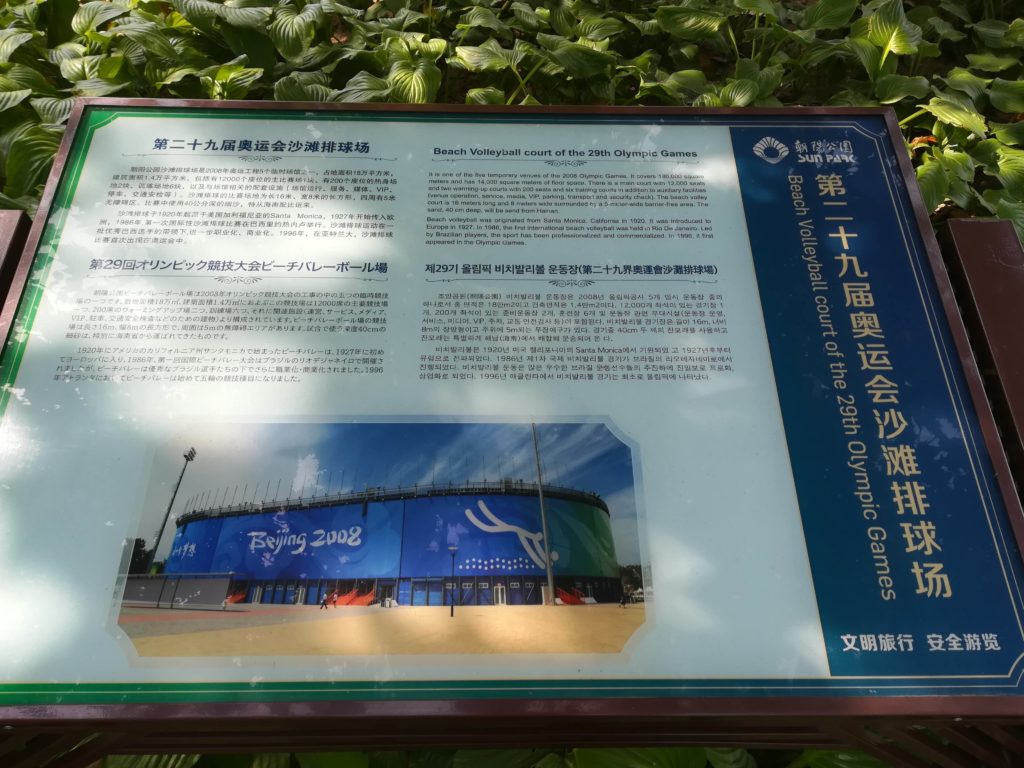
Last Traces of the Mega-Event: Flag Holders, Sand, and Sprayers
But the main stadium has not been used for years, nor has it been maintained, except for hosting the 2011 and 2012 Beijing Grand Slam of the FIVB Beach Volleyball World Tour. The stairs and metal structures are rusting away. The huge volleyball court now stands as a large deserted and vacant space with an empty parking lot, empty signs, empty flag holders, and empty seats.


The quality of the stadium was not as alarming as one would imagine after being disused for so many years.
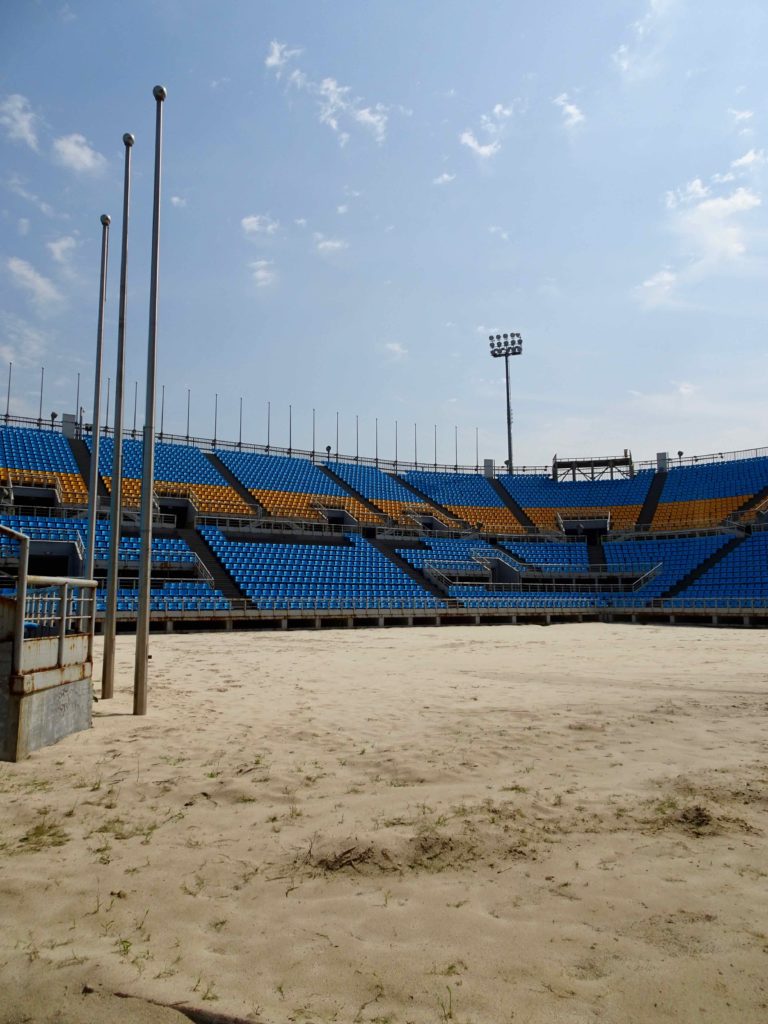
According to various sources1, the volleyball ground contained 17,000 tons of fine sand imported from Hainan. It felt good to walk in it!
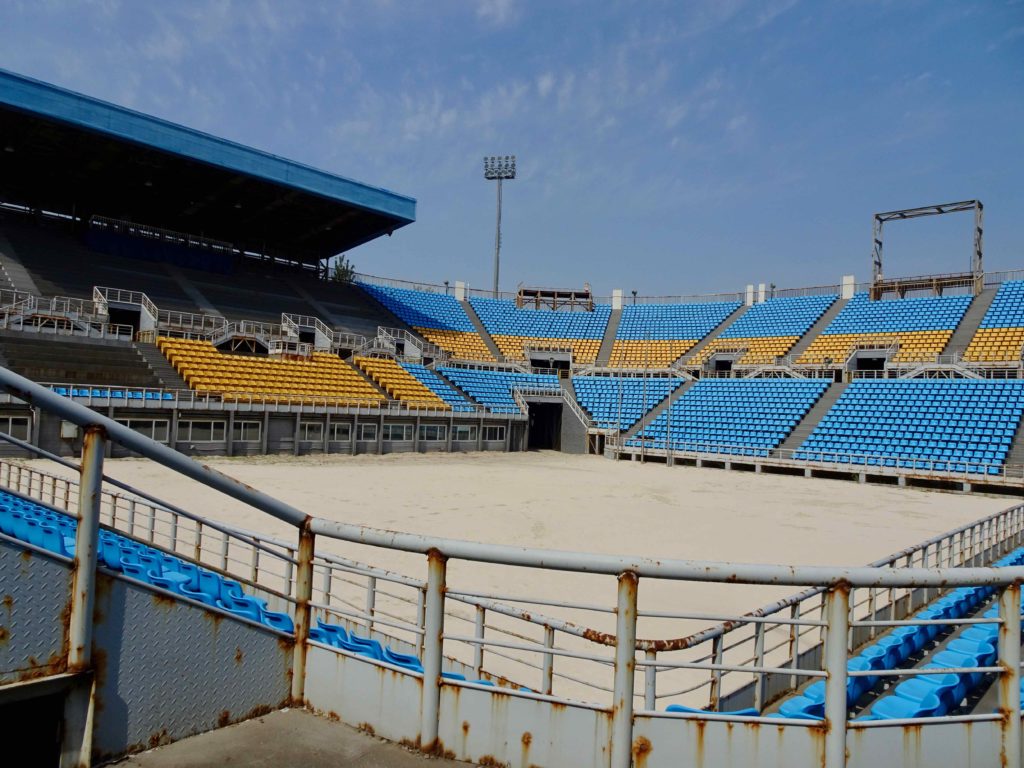
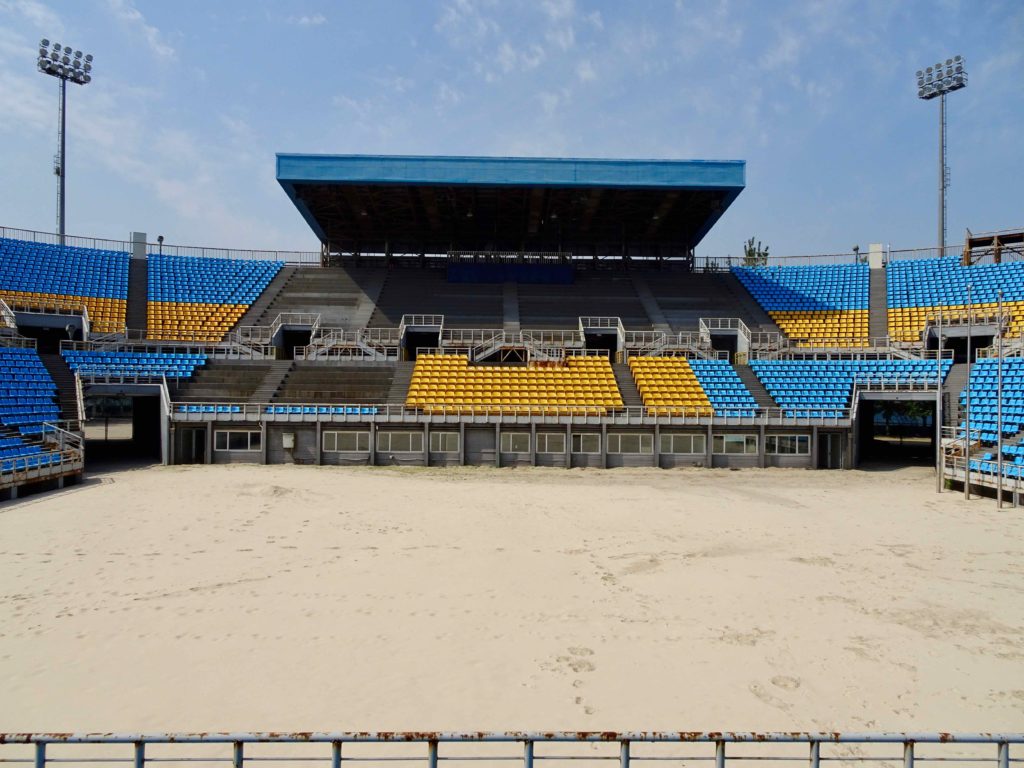
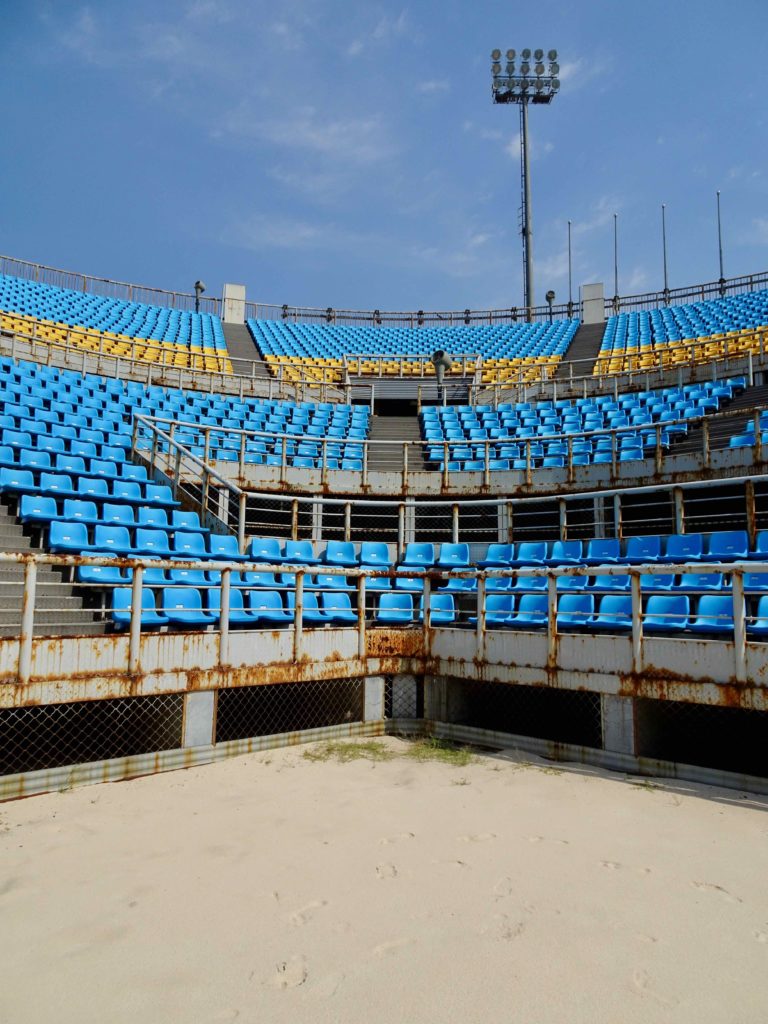
Apart from the « Olympic sand, » the only last traces of the 2008 Olympics were a few old sprayers used to humidify the air, found hidden under the structure:
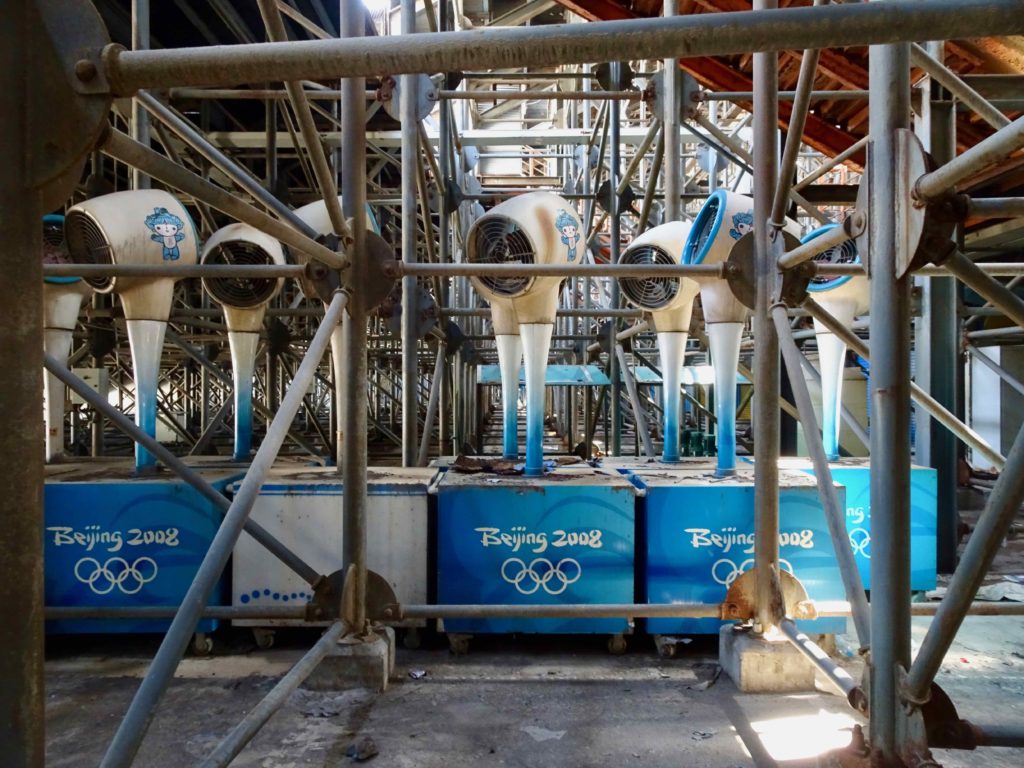
Partially Re-used Olympic Space: The Aquatic Park
Next to the main stadium, one can find another smaller warm-up facility (two warm-up volleyball courts were included in the Olympic field):
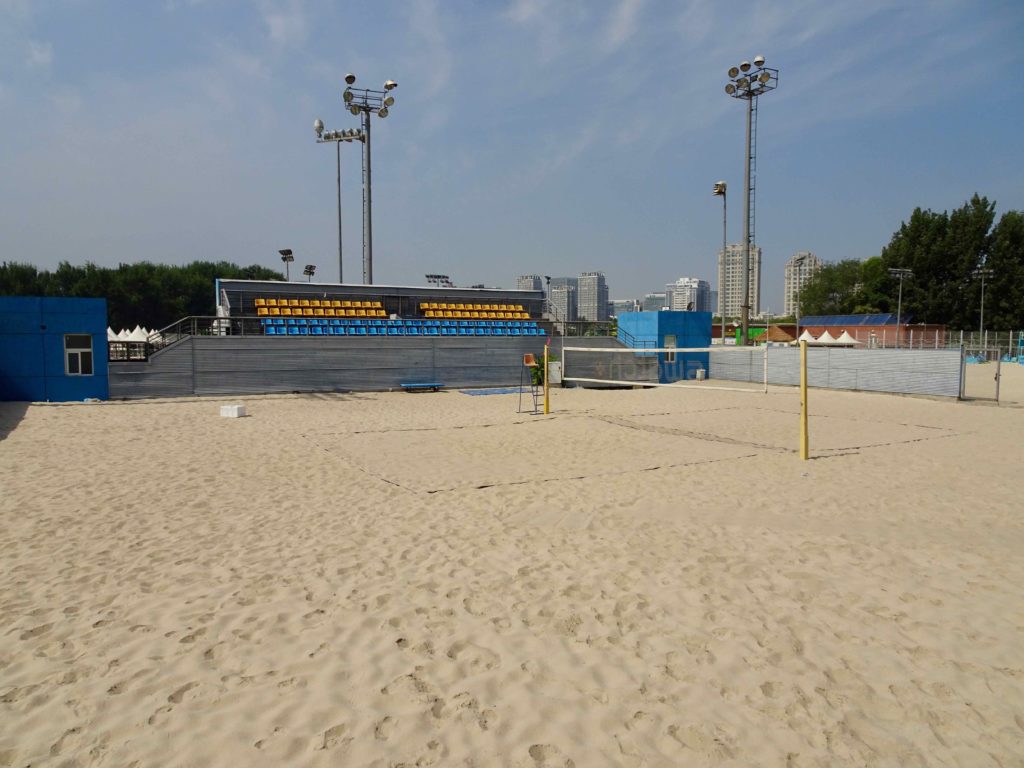
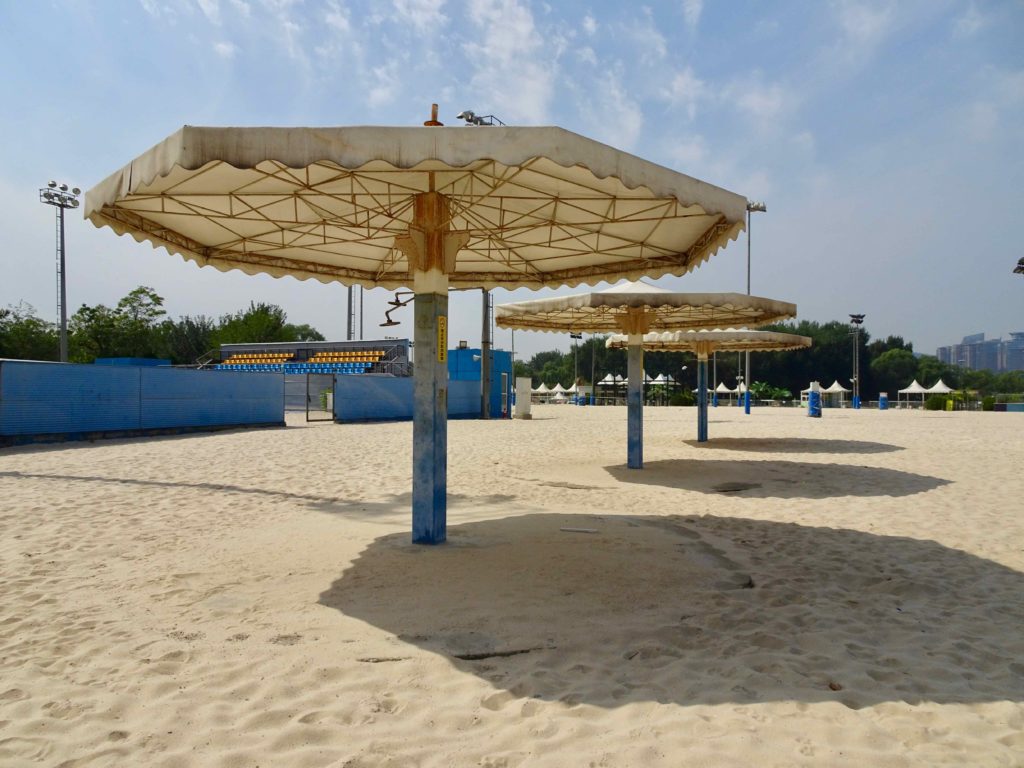
The smaller facility, which connects to a swimming pool, has been re-used each year for a summer beach-themed event, according to a press report2.
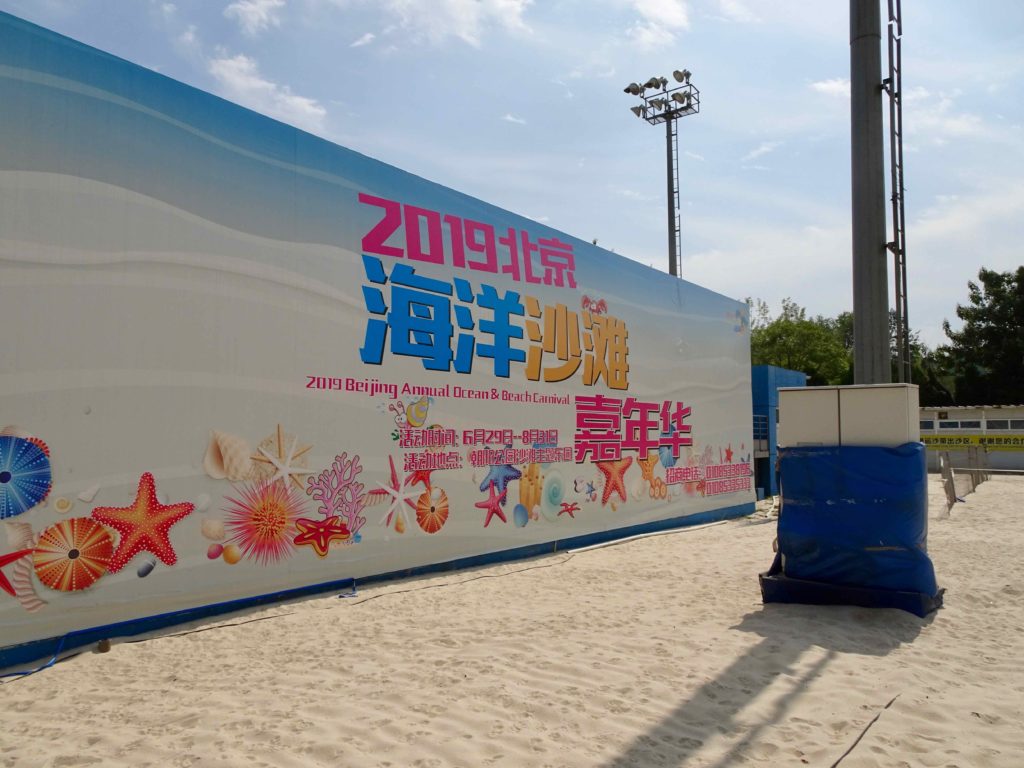
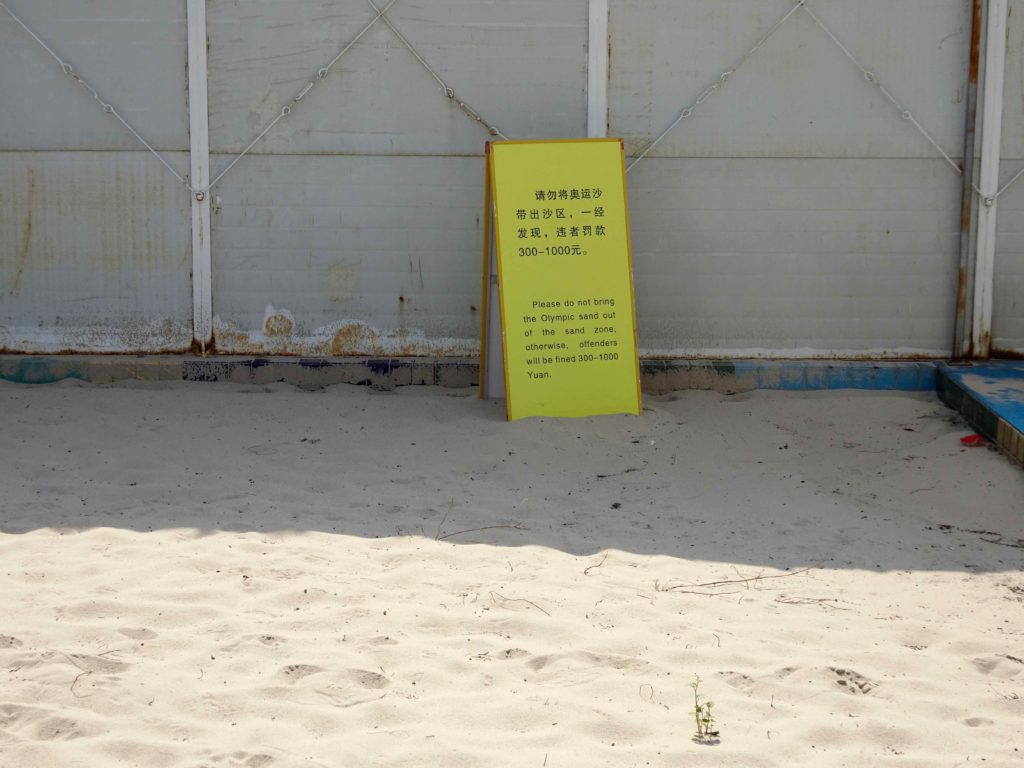
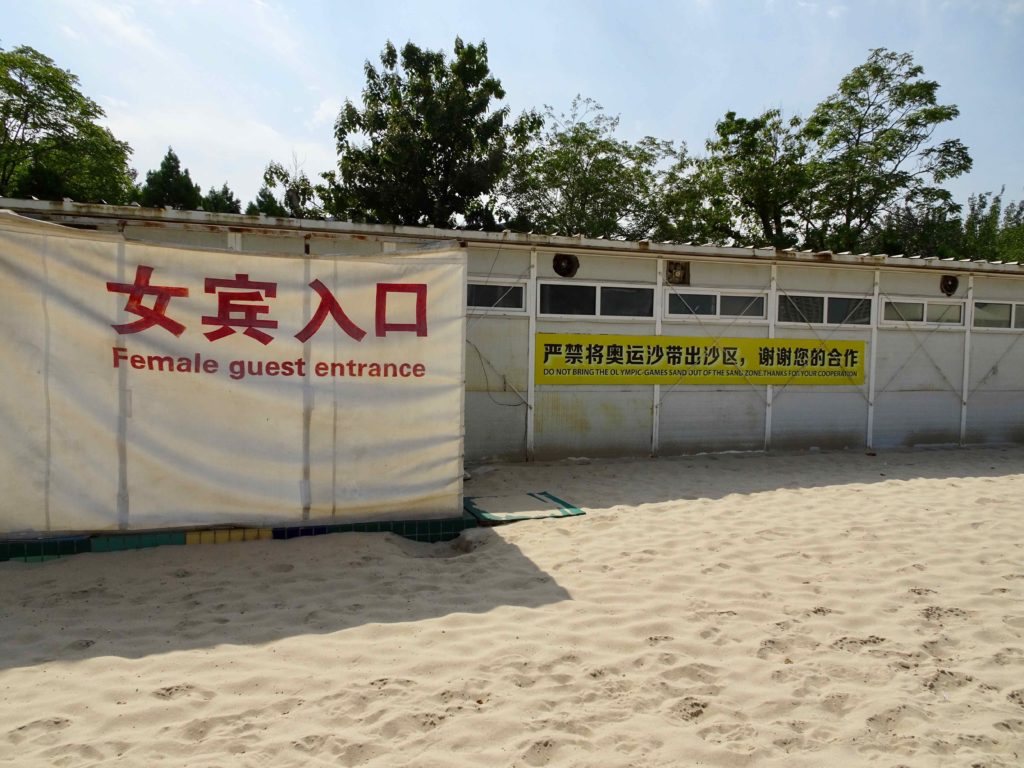
If you like these mega-event ruins, you can also check my reports on the abandoned pavilions of the 2010 Shanghai World Expo part 1, part 2, and part 3. You can also read Brin’s urban exploration report.
Bibliography
Anne-Marie Broudehoux, « Spectacular Beijing: The Conspicuous Construction of an Olympic Metropolis, » Journal of Urban Affairs, 2007, Vol. 29, No. 4, pp. 383-399.
Mike Byrnes, « Beijing’s Olympic Ruins, » Citylab, 6 July 2012, https://www.citylab.com/life/2012/07/beijings-olympic-ruins/2499/ (accessed on 4 October 2019).
Ben Kissler, « Olympic-size burdens, » Unimaginary Places, 19 November 2014, https://unimaginaryplaces.wordpress.com/2014/11/19/olympic-sized-burdens/ (accessed on 4 October 2019).
